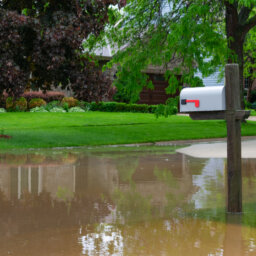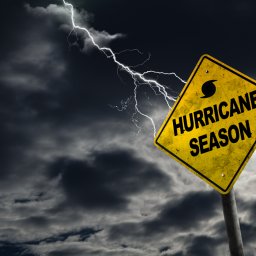
Flood Insurance Details
Most flood insurance in the United States is underwritten by the federal government’s National Flood Insurance Program (NFIP), which is administered by FEMA. As an organization, its responsibility has been to provide affordable flood insurance to property owners, renters, and businesses since 1968.
Although the federal government administers it, you can purchase flood insurance through independent agencies like IHS Insurance Group. Here, we’ll quickly outline what you need to know before handing over your hard-earned money.
What’s the Definition of a ‘Flood?’
Depending on your specific policy, homeowners insurance typically provides coverage for water damage claims related to weather events like rain and windstorm, as well as plumbing, electrical, furnace, and appliance failure.
However, no homeowner’s policies provide coverage for damage related to floodwater or rising water bodies, whether oceans, rivers, streams (such as flash flooding), or lakes.
Related: Facts and Myths About Flood Insurance
What Does Flood Insurance Actually Cover?
Similar to a standard homeowner’s policy, the NFIP’s flood policy delineates between building property and personal property. Examples of building property include:
- Your home
- Your home’s foundation
- Electrical, plumbing (including water heater), and HVAC systems
- Kitchen appliances
- Permanently installed features like carpeting, paneling, built-ins (e.g., bookcases, cabinets, etc.)
- Detached garages (up to 10% of your policy’s structure limit)
- Debris removal
Comparatively, the NFIP flood policy defines personal property as:
- Your clothing
- Furnishings (including electronic equipment)
- Movable appliances (e.g., window air conditioning units, portable microwaves, washers and dryers, etc.)
- Food inside a freezer
- Valuables, like fine art and furs (up to $2,500)
Does Flood Insurance Have a Coverage Limit?
To help provide coverage to homeowners who would otherwise be left entirely vulnerable if their home was flooded, FEMA’s National Flood Insurance Program (NFIP) offers two different flood policy limits of $100K or $250K. No other limits are available through the federal government.
The good news is that an increasing number of private insurers have started offering their own flood insurance policies, which can replace the NFIP policy altogether or supplement it by providing limits higher than $250K for high-value homes.
What’s Excluded by Flood Insurance?
Like a homeowner’s policy, each carrier will list exclusions—specific property or circumstances that are not covered—in the verbiage of their flood policies.
Related: The Five Parts of an Auto & Home Policy
From a general perspective, though, flood policies don’t cover wells, septic systems, or damage resulting from sewer backup. They also typically exclude most detached structures (e.g., walkways, decks, patios, fences, pools/hot tubs, retaining walls, etc.), trees and other plants, cars, mold damage resulting after the initial flood, and currency-related items like precious metals, stock certificates, bearer bonds, and cash.
Furthermore, the NFIP also limits coverage related to basements (including walkouts), below-ground living spaces, and crawlspaces.
If you have to move out of your home, flood insurance generally won’t cover temporary housing, additional living expenses, or loss of income.
Is Flood Insurance Required?
Here’s what the FEMA website says:
“Congress has mandated federally regulated or insured lenders to require flood insurance on mortgaged properties located in areas at high risk of flooding. But even if your property is not in a high-risk flood area, your mortgage lender may still require you to have flood insurance.”
In layperson’s terms, if your home is located inside a Special Hazard Flood Area and you have a mortgage on the property, your lender will almost certainly require that you also carry flood insurance.
To find out whether your home is located inside a flood zone, you can enter your address in FEMA’s Flood Map Service Center.
Even if you’re not required to carry flood insurance, though, FEMA emphasizes that “more than 20 percent of flood claims come from properties outside the high-risk flood zone,” so you might consider purchasing flood insurance, since it’s relatively inexpensive.
How Much Does Flood Insurance Cost?
According to HouseLogic’s Donna Dezube, the average annual cost for a flood insurance policy is about $700, or roughly $58 per month. Obviously, this rate will be impacted by crucial factors like the specific amount of coverage you need, the deductible you choose, where your home is located (flood zone, specifically), the age of your house, and so forth.
With this said, if you live in a low-to-moderate-risk area, flood insurance rates are federally mandated across the board, regardless of the company through which you purchase coverage.
On the other hand, if your home is located inside a high-risk flood zone, your rate will be based on a unique combination of factors like the property’s age, construction type, value, elevation, and how close it is to bodies of water.
How Can You Learn More About Flood Insurance?
According to FloodSmart.gov, just one inch of water inside your home can cause $25,000 worth of damage. So, you can imagine how much damage a significant flood could deliver to your home, and how much of the repairs you’d have to pay out of your pocket if you didn’t carry flood insurance.
Instead of stressing about flood insurance, though, the professional staff at IHS Insurance Group is here to help you find the coverage you need at a price you can afford.
Need a FREE Quote or have questions regarding Flood Insurance Coverage? We have three convenient ways to reach us:
- If you prefer to talk to a licensed agent directly, please call (866) 480 5063.
- If you prefer to fill out a quick form and have an agent get back with you at your convenience, use the GET A FREE QUOTE.
- Lastly, for those that want an immediate quote, please click HERE.
We look forward to speaking with you today!




